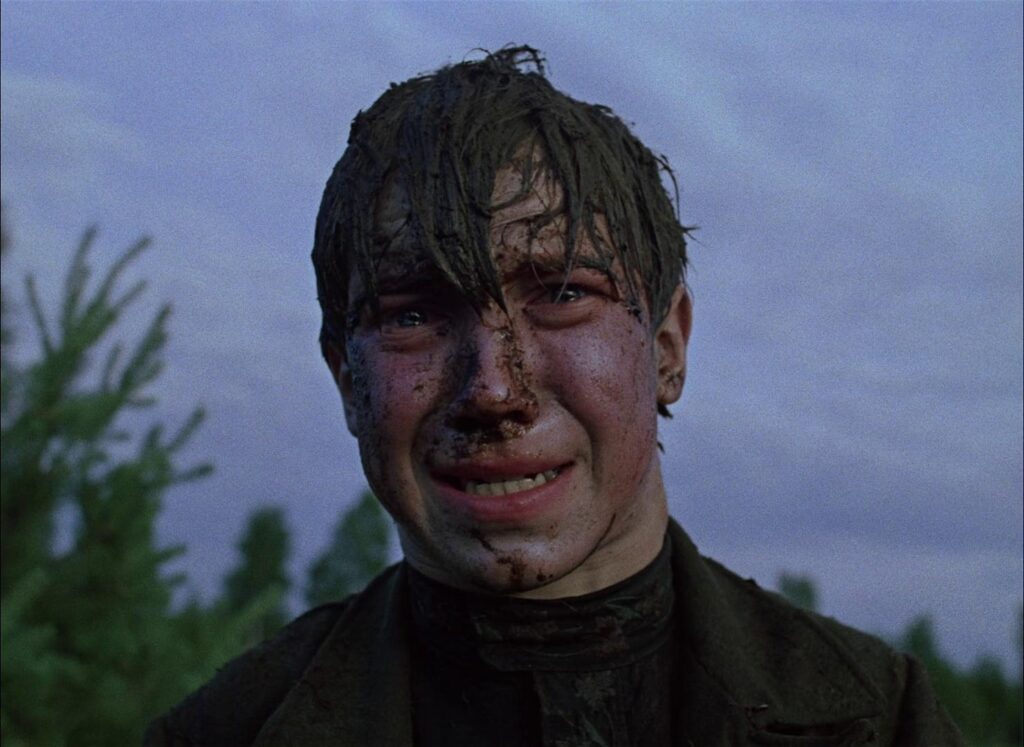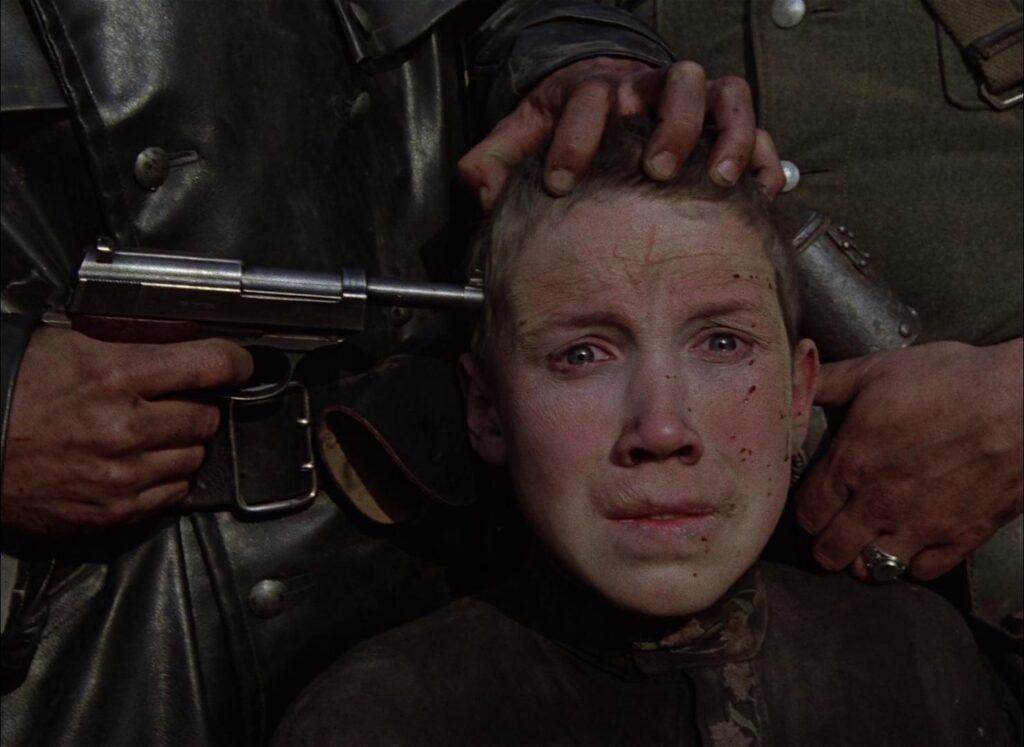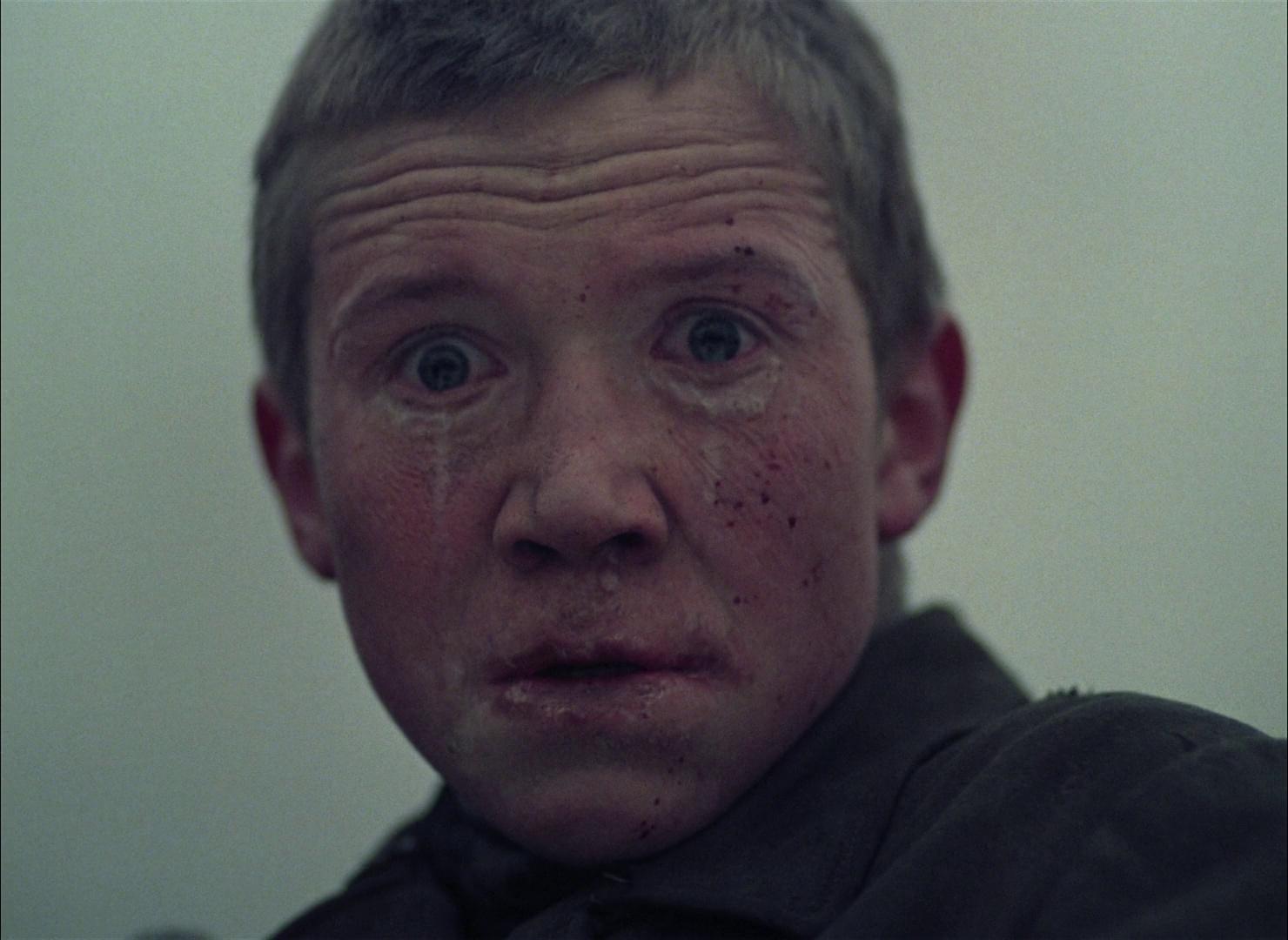The thousand-yard stare is a term used to describe the blank, emotionless gaze of trauma and the numbness that follows it, often seen in soldiers who have experienced war. It’s a look that tells a story of unspeakable suffering, and the 1985 Soviet war film Come and See painfully captures it in its protagonist, Florya.
Directed by Elem Klimov, Come and See follows Florya, a young Belarusian boy, who joins the Soviet resistance against the invading German army during World War II. Through his eyes, we witness the horrors of war – the death of innocent civilians, the brutality of the enemy soldiers, and the physical and psychological trauma inflicted upon the soldiers themselves.
The Greatest Performance by a Young Actor
One of the most striking features of Come and See is the phenomenal performance of its lead actor, Aleksey Kravchenko, who was only 14 years old at the time. Kravchenko’s portrayal of Florya is nothing short of brilliant and haunting; he exudes a certain vulnerability and innocence that make you root for him, but as the events of the film unfold, we watch as he transforms into a shell of his former self.

Creating the Thousand-Yard Stare
To achieve the thousand-yard stare, Klimov used several techniques that contributed to Kravchenko’s emotional performance, including the use of makeup, sound design, and a grueling filming process.
Makeup played a significant role in creating the physical appearance of Florya as he descends further into the despair of war. As his experiences become more traumatizing, Florya’s physical appearance begins to deteriorate. He loses weight, his eyes become sunken, and his skin takes on a grayish, pallid hue. The use of makeup to create this physical transformation helped to reinforce the idea that Florya was losing not only his innocence but his humanity as well.
The sound design also helped to create the emotional state of Florya. In one particular scene, Florya and his comrades are caught in a barrage of German artillery. The camera shakes, and the sound of the explosions is deafening, drowning out any other noises. As the scene progresses, the sound of the explosions becomes more and more muffled until it’s entirely silent, leaving the viewer with nothing but the image of Florya’s traumatized face. This technique accentuated Florya’s state of shock and stunned silence, emphasizing the damage done to him psychologically as well as physically. The lack of sound also created a sense of disorientation, highlighting the chaos and confusion that war brings.

Affective Memory
Kravchenko’s acting method also played a crucial role in creating the perfect thousand-yard stare. Klimov reportedly used a method of directing called “affective or emotional memory.” This technique, developed by 20th century stage director Konstantin Stanislavski, involved the director and actors drawing on their own personal experiences and emotions to tap into the character’s emotions and experiences.
For example, Klimov reportedly fed Kravchenko multiple horrific headlines from the war that he would later use to help evoke the necessary emotions for the scenes he was shooting. Kravchenko also drew on his own experiences – he reportedly witnessed a murder when he was younger, and he used that memory to help him connect with Florya’s trauma.
This technique of drawing on personal experiences helped Kravchenko create a genuinely authentic and emotionally charged portrayal of Florya, the likes of which is rarely seen on screen. It’s what gives the character depth and humanity despite the horrific things he’s forced to experience.
Experiences On Set
Lastly, the grueling filming process undoubtedly contributed to Kravchenko’s raw performance. The shoot took around six months to complete, with several scenes shot using live ammunition, and real tanks and planes. The actor later told in interviews that he felt real bullets passing only 10 centimeters over his head. The director feared that his young actor would end up getting traumatized by the filmshoot, so he tried to have him hypnotized in order to avoid psychological damage upon his young soul. Unfortunately, Aleksey Kravchenko wasn’t susceptible to hypnosis.

Kravchenko was not an experienced actor when he took on the role of Florya, and the constant physical and emotional pressure of the shoot took its toll on the young actor. He was reportedly severely injured during the filming of one scene, and the director had to convince him to continue.
The grueling shoot, combined with the use of live ammunition and the true-to-life sound design, created a visceral, emotionally charged experience for both the actor and the viewer. Kravchenko became Florya in every sense of the word, and his thousand-yard stare is a piece of evidence for it. The result of these decisions was very grueling for the cast and crew. However, it led to one of the best, most visceral war movies ever made. And possibly the best performance by a child actor.
Conclusion
Come and See is a tour de force of filmmaking, and the creation of the perfect thousand-yard stare in its teenage protagonist is a true testament to the talent and devotion of the director and actor. The thousand-yard stare is a symbol of the human soul’s deterioration, and it’s a testament to Florya’s bravery and resilience that he manages to survive such unspeakable horrors. It’s a stare that will inevitably haunt the viewer long after the film’s credits have rolled, serving as a stark reminder of the destructive power of war and its impact on the human psyche.




